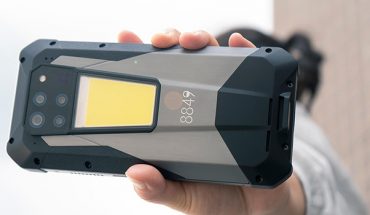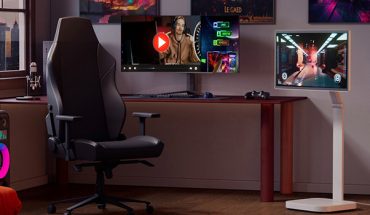As students and parents, front-line education workers, and back-end administrators across Canada and struggling with the realities of heading back to school during a coronavirus pandemic, everyone involved has learning to do.
The uncertainty surrounding a safe return to the classroom has created a tremendous need for new methods of teaching, particularly those that can replace or at least augment in-person learning by creating an effective and engaging classroom in the digital world.
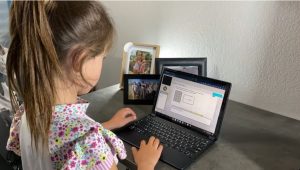
A young learner-at-home logs onto a virtual classroom using new software from ViewSonic. ViewSonic image.
But the explosion in e-learning options and opportunities (and in the phrases used to describe it: online or virtual learning, remote teaching, distributed learning, distance education, even hybrid learning, in which elements of old and new pedagogy are combined, are used) means a lot of new learning is required, not just about ABCs or the three Rs and not just by students.
The education system is being restructured in the Age of COVID, so teachers and school administrators need to quickly master a whole new range of education resources, including the latest hardware and software tools.
(Canada, like many other countries, is “grappling” with these issues, says the Information and Communications Technology Council, a national not-for-profit agency focused on the digital economy. ICTC is now in the third phase of its research into distance learning and the edtech ecosystem. ICTC will report on best practices, policies, and guidelines for implementing e-learning. Somewhat like a late homework assignment, unfortunately, the ICTC says only that its report will be published “soon”.)

Online, virtual, or especially hybrid teaching techniques can combine the best of old and new, even if the student stays at home. ViewSonic Image.
In the meantime, individual provincial education ministries and regional boards of education are proceeding apace, striking out in the best way they can but often utilizing different methodologies if not actual technologies.
In B.C., for example, some school districts opting for online education delivery are making use of a Virtual Learning Environment (VLE) powered by D2L’s Brightspace Learning Platform. D2L is a Canada-based company with offices (and data storage) in Canada.
Brightspace is provided to all Ontario school boards, and the province’s largest board, the Toronto District School Board, supports two online learning platforms: Google’s G Suite for Education and Brightspace.
(Interestingly, TDSB does not support or even recommend using Zoom, the widely used videoconferencing software which is a big part of online learning solutions in other jurisdictions.)
Among the many technology developers and equipment manufacturers working in the space, projector and display maker ViewSonic launched a distance learning initiative in response to the COVID-19 outbreak and the need for new approaches to education. It introduced a hybrid teaching tool called myViewBoard Classroom (and now myViewBoard Classroom Software) and provided it free of charge to K12 schools, colleges, and universities.
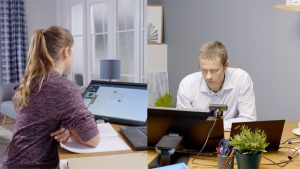
myViewBoard Classroom is a purpose-built solution designed with the teacher in mind first, rather than technology lead philosophy to assist educators in this new era of hybrid learning. ViewSonic image.
Exhibiting a practical, open, platform-agnostic philosophy, the software runs on Google Chrome or Microsoft Edge and supports Windows, Mac, and Chrome OS.
It works with other virtual or online education tools like Google Classroom and G Suite for Education, and it can be used with all learning management systems (LMS). It works with other popular and existing presentation programs like Acrobat PDFs and Google Slides and it can handle embedded links to content resource sites like YouTube. Lessons can also be broadcast via YouTube or Facebook as a myViewBoard live stream.
So it does have its own built-in video and audio, as well as live chat functionality, meaning teachers and students can interact in real-time during online sessions.
Many of the myViewBoard features were demonstrated online for WhatsYourTech.ca by Blake Everhart, Solution Training Manager at ViewSonic Americas, who has both technical and teaching experience.
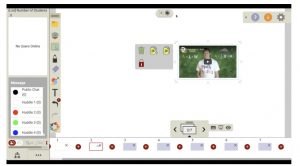
Teaching tools like video, pdfs, slides, and other media assets can be positioned and annotated on-screen. Screengrab image.
“As a former teacher, I understand there’s sometimes a gap between learning the scope and sequence of the technology side that can match up with the lessons you want to teach,” Everhart explained. “Remote and distance learning lessons are definitely different than inside the confines of a classroom,” he said, adding he has three school-age kids of his own. “That’s why my team and I at ViewSonic are making ourselves available to help out, and make things less overwhelming.”
He showed how live teacher-student interactions could be supported with video sharing, and how other collaborative learning features like shared whiteboarding and even instant huddles (sub-dividing the online class into smaller groups) for focused interactions. Annotations can be two-way on the system, as teachers can assign certain whiteboard mark-up tools to an individual student.
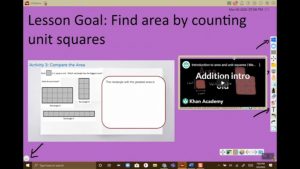
Teaching aids and classroom assets can be presented on the desktop of myViewBoard. Screengrab image.
Of course, privacy and security are crucial to an online learning environment, so the ViewSonic system has built-in tools for secure authentication, compatible with Google and Microsoft single sign-on that only allow registered students to enter. The system can be used to generate QR codes or random passwords that also allow and authenticate access to the virtual learning environment. The system operates with 256-bit encryption.
As Everhart mentioned, there is a team as well as a tool to help teachers. The ViewSonic Professional Development (PD) team provides educators with on-demand, online support on topics including the basics of distance learning and the interactive tools used to support them.
It’s like going to school.
-30-
More articles on Distance Learning

